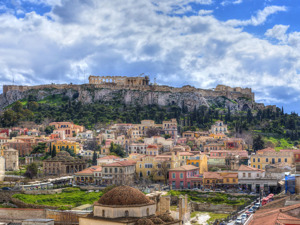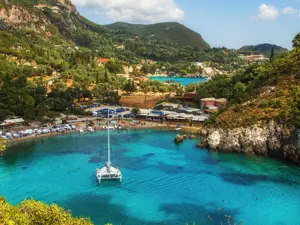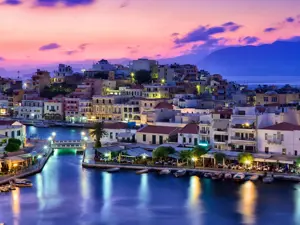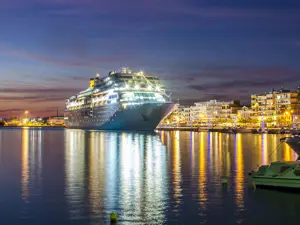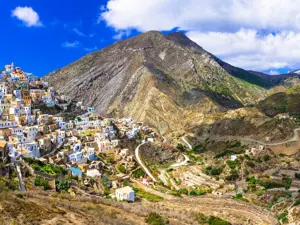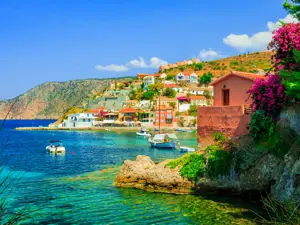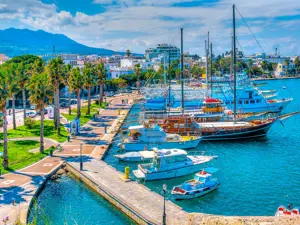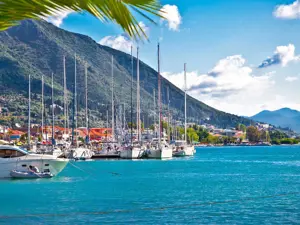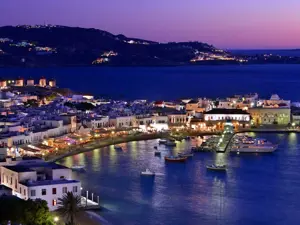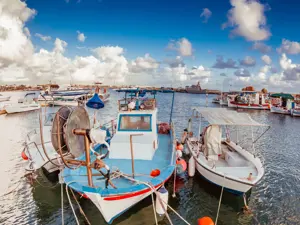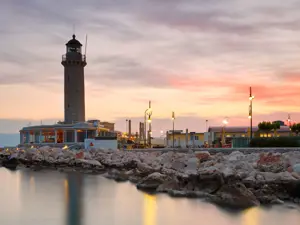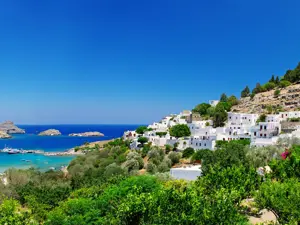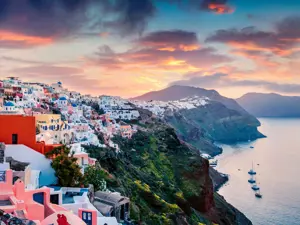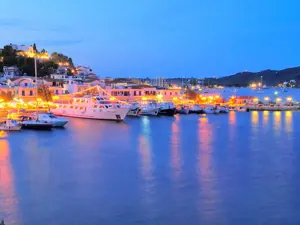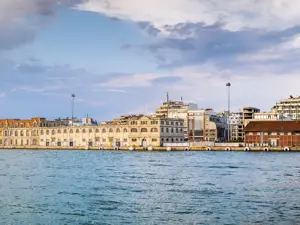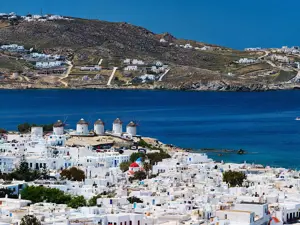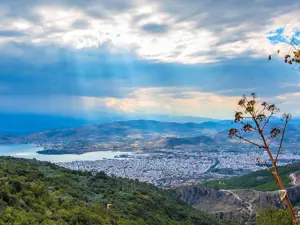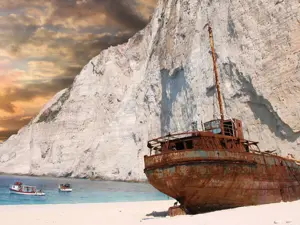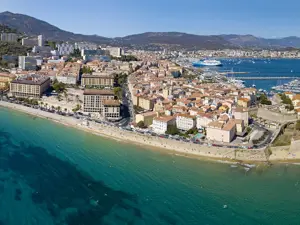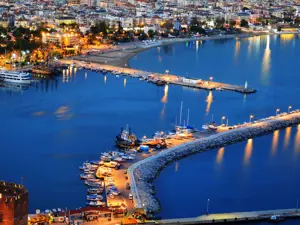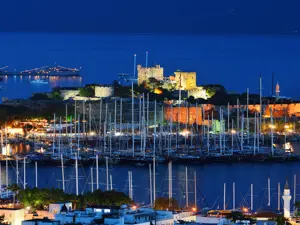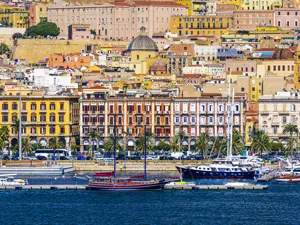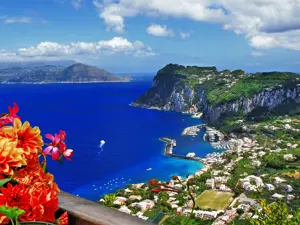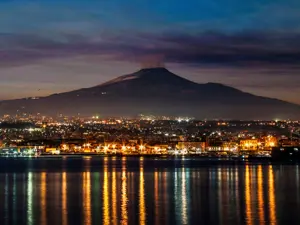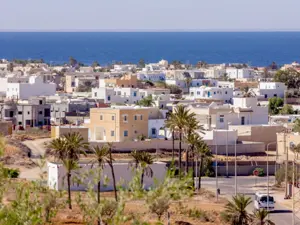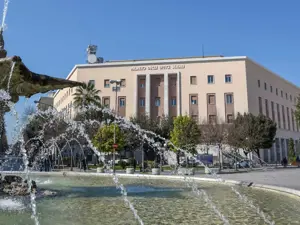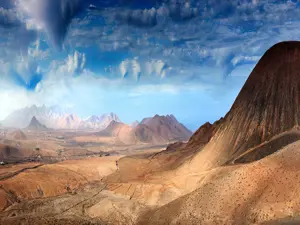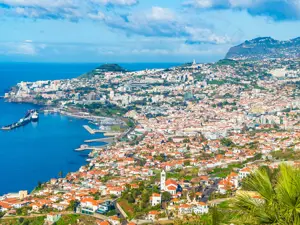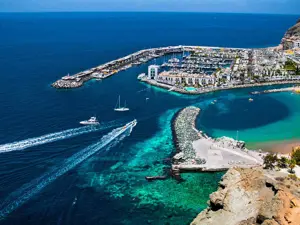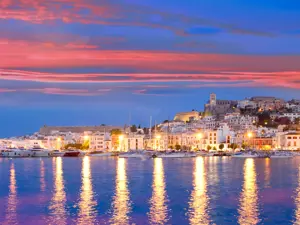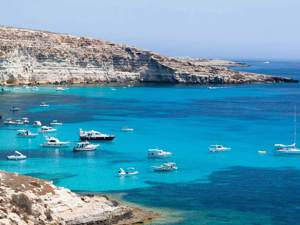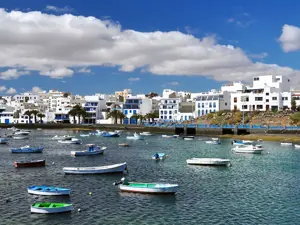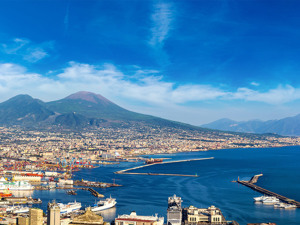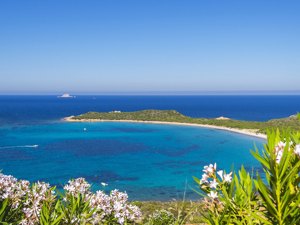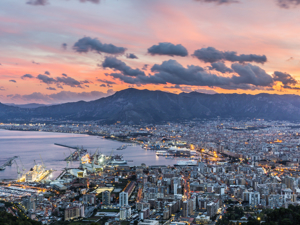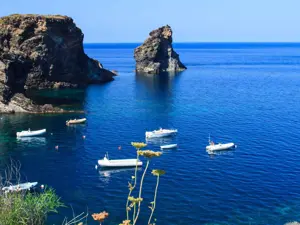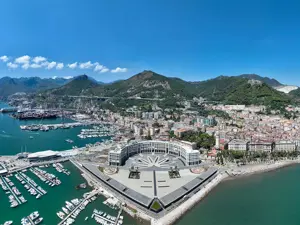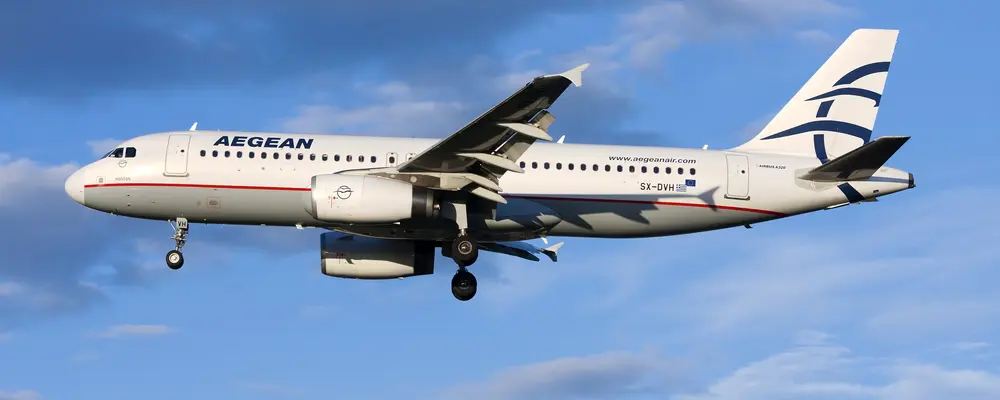A natural paradise surrounded by an intense blue sea
As soon as you land at Aktion Airport in nearby Preveza - on the border of the region of Epirus - en route to Lefkada, you feel like you are in the midst of natural paradise surrounded by an intense blue sea.
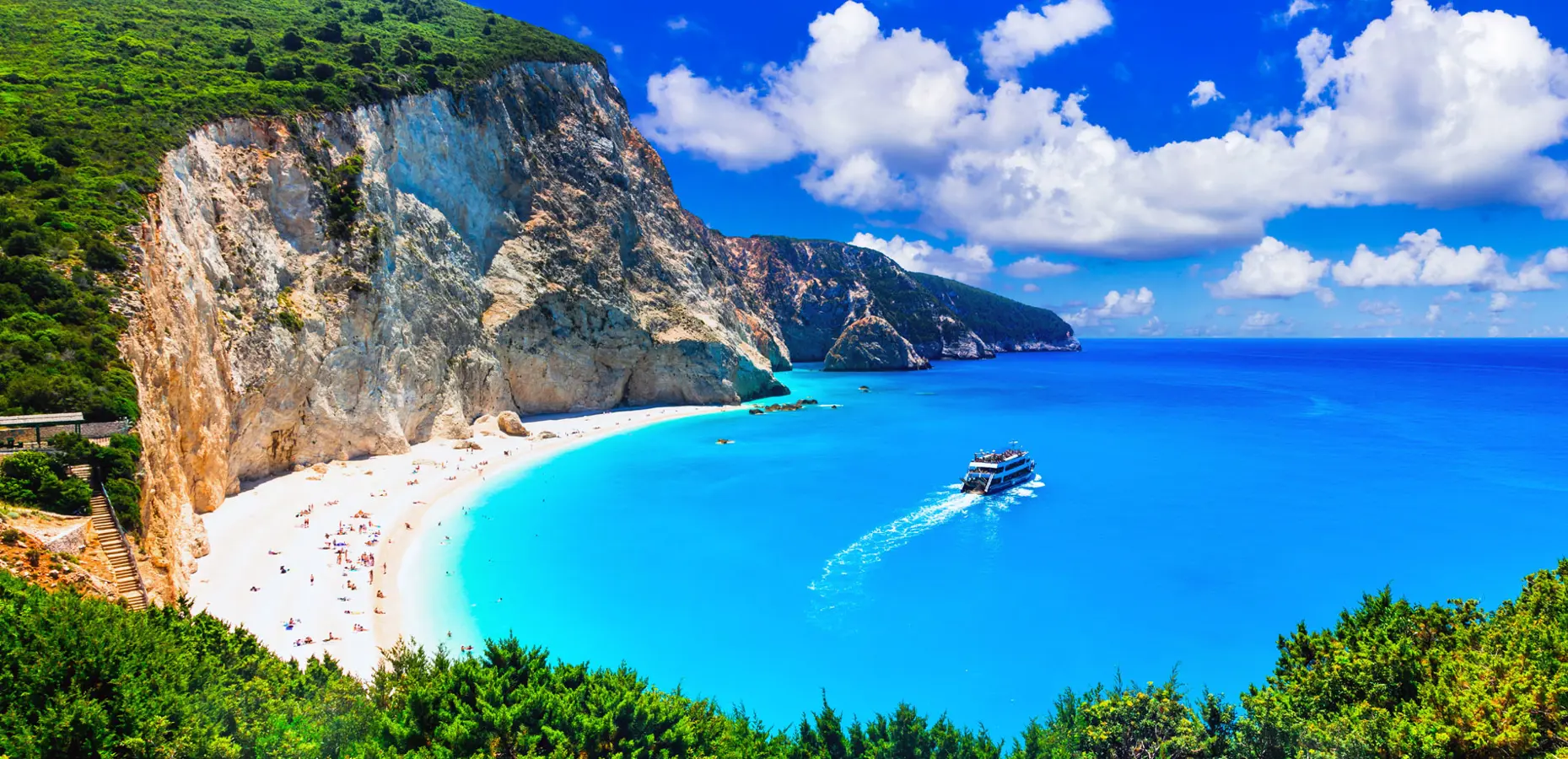
Lefkada. Porto Katsiki. Copyright © Sisterscom.com / Shutterstock
And all you have to do is cross this sea by boat or by car to find yourself in Lefkada - the island is unique in that it can also be reached by car thanks to a floating bridge that connects it to the coastline of Akarnania, in the centre of Greece.
Lefkada, also known as Lefkas, is part of the small Ionian archipelago that includes 24 islands, both large and small, encompassing perhaps the most famous, Skorpios, the legendary retreat of the Onassis family, and from its central position in the Ionian Islands, is an obvious starting point for going in discovery of other nearby islands and the mainland across the water.
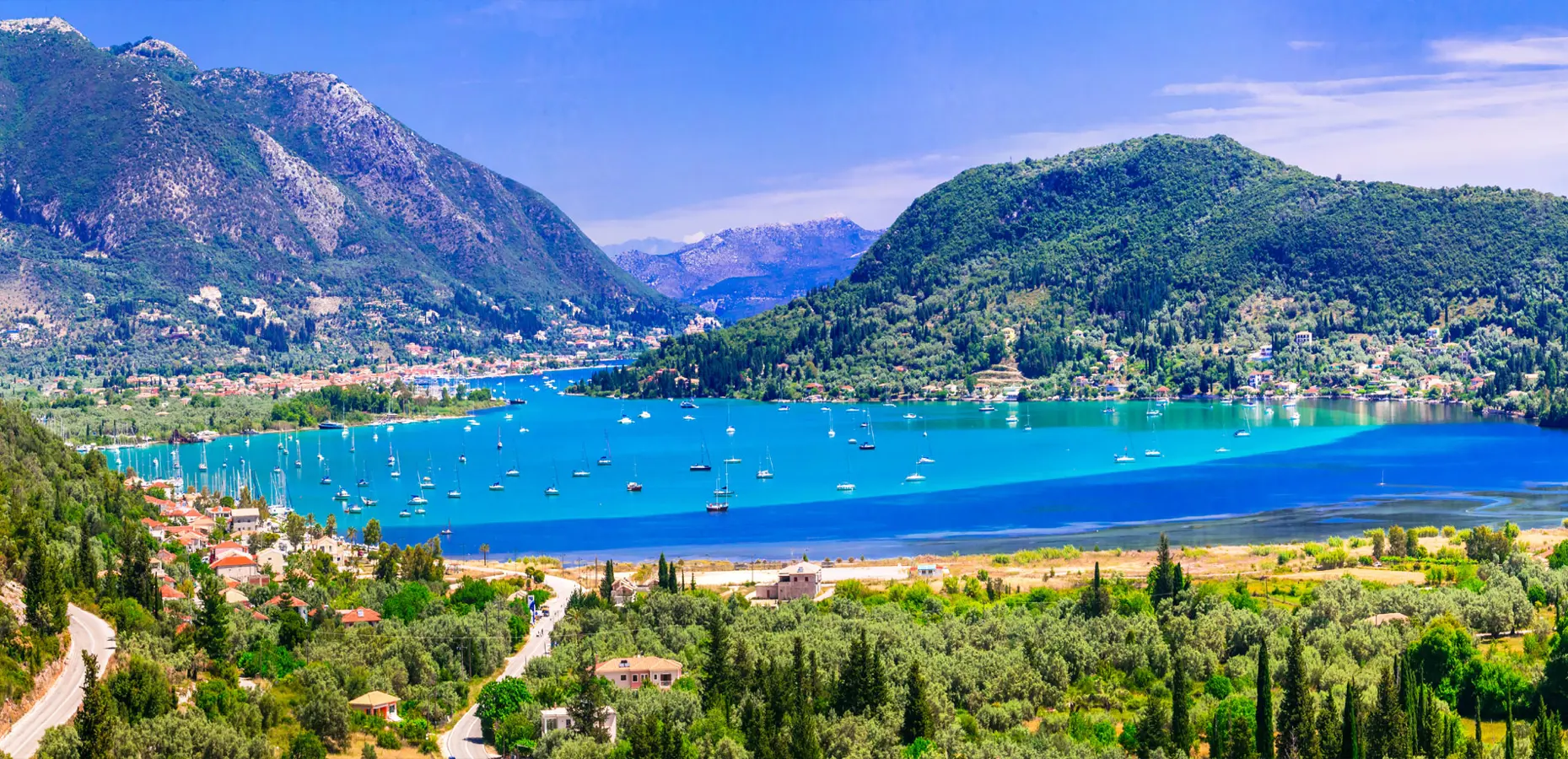
Lefkada. Nidri bay. Copyright © Sisterscom.com / Shutterstock
Archaeological sites, monasteries and churches, museums, book stores and picturesque villages pique visitors’ interest for this island, which also offers some of the most beautiful beaches in the world and a sparkling blue sea that has collected many awards for the purity of its waters.
The beaches of Lefkada
Some of the loveliest beaches include Ioannis and Mylos, both equipped with bars and restaurants, Gyra, ideal for families with children, Egremni, surrounded by an impressive cliff face, and Kastro, situated opposite the floating bridge.
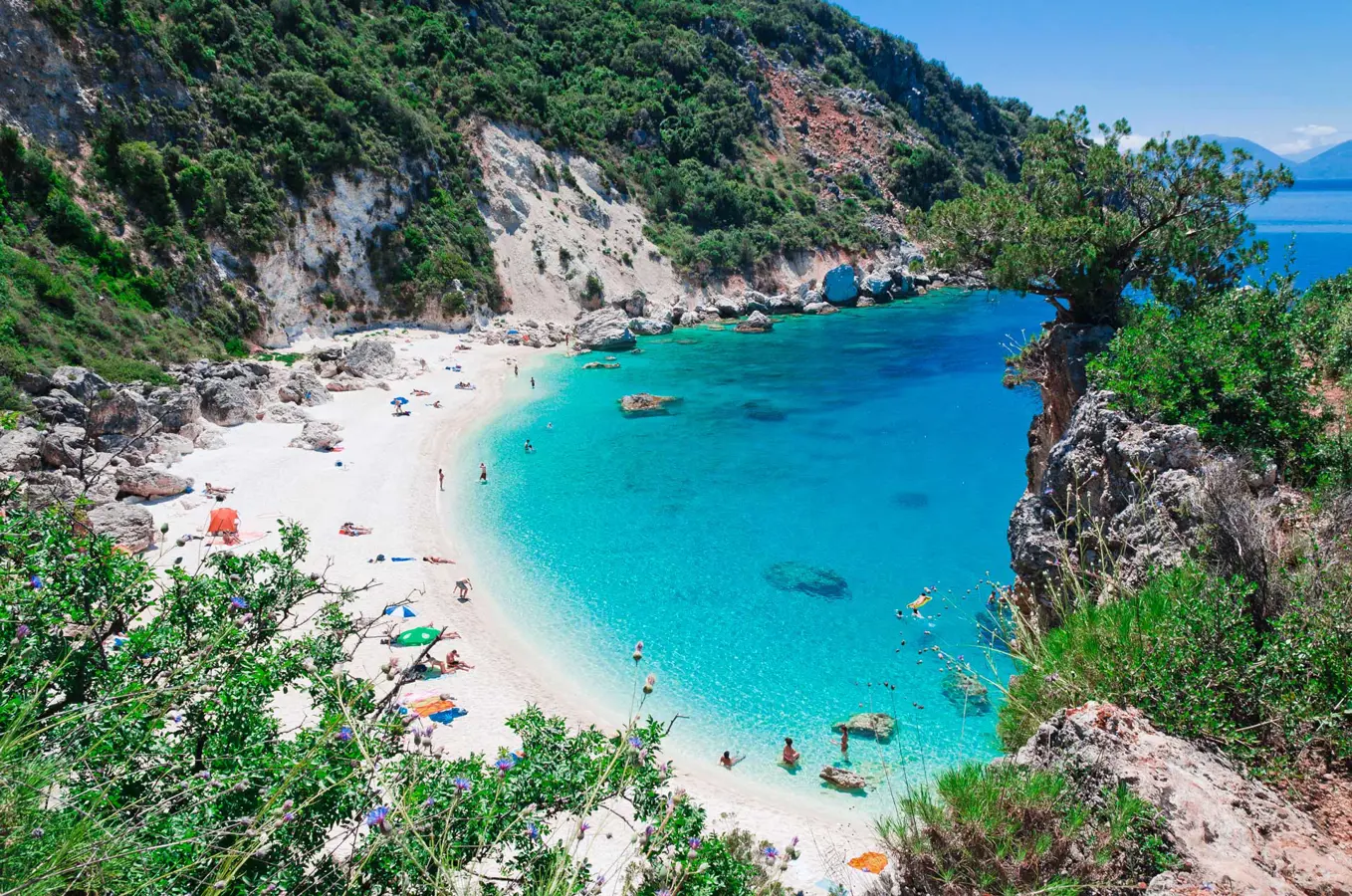
Lefkada. Agiofili beach. Copyright © Sisterscom.com / Shutterstock
The Island of Lefkada over the centuries has had three capitals. The first was Nirikos, which is situated approximately two kilometres from the current capital, and which is said was built by Pyrrhus, King of Epirus in honour of his mother-in-law, Vereniki; the second was built inside the Castle of Agia Mavra, and the third, the current, was founded in 1684 when the Venetian Francesco Morosini was in power. The Venetians, in fact, occupied the island of Lefkada for four centuries, from the fourteenth to the eighteenth century, and many buildings today display influences of the style of Venice, the beautiful lagoon city. Destroyed by fire in 1825, the city was rebuilt under the supervision of the British, who used anti-seismic systems for the new constructions.
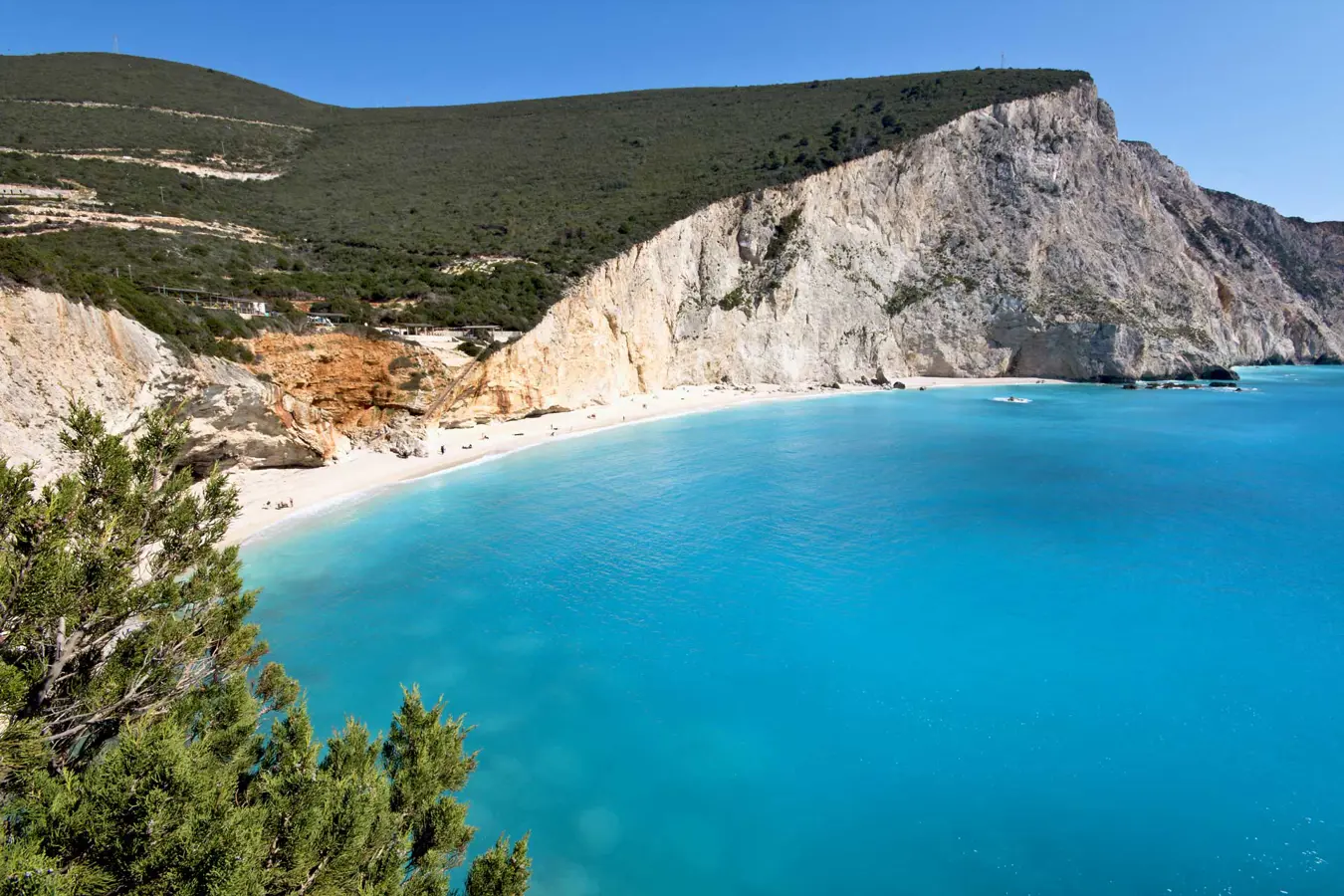
Lefkada. Porto Katsiki beach. Copyright © Sisterscom.com / Shutterstock
A diverse landscape unfolds before the eyes of the tourist: the Island of Lefkada among other things is surrounded by a lagoon of insurmountable beauty, the site of rare species of migrating birds and a great attraction for lovers of aquatic sports, which include sailing, surfing and scuba diving.
To visit in Lefkada
Lefkada also offers interesting aspects linked to its cultural activities, such as the Archaeological Museum, the Orpheus Folklore Museum, as well as the many book stores, which present the history of the island and the events over the centuries; it even boasts a Philharmonic Orchestra. Art, literature and musical events take place throughout the year, attracting thousands of tourists. Numerous people visit the Panagia Faneromeni Monastery, which is dedicated to the Virgin Mary, patron saint of the island, and offers a wonderful view over the Agios Ioannis-Frini beach.
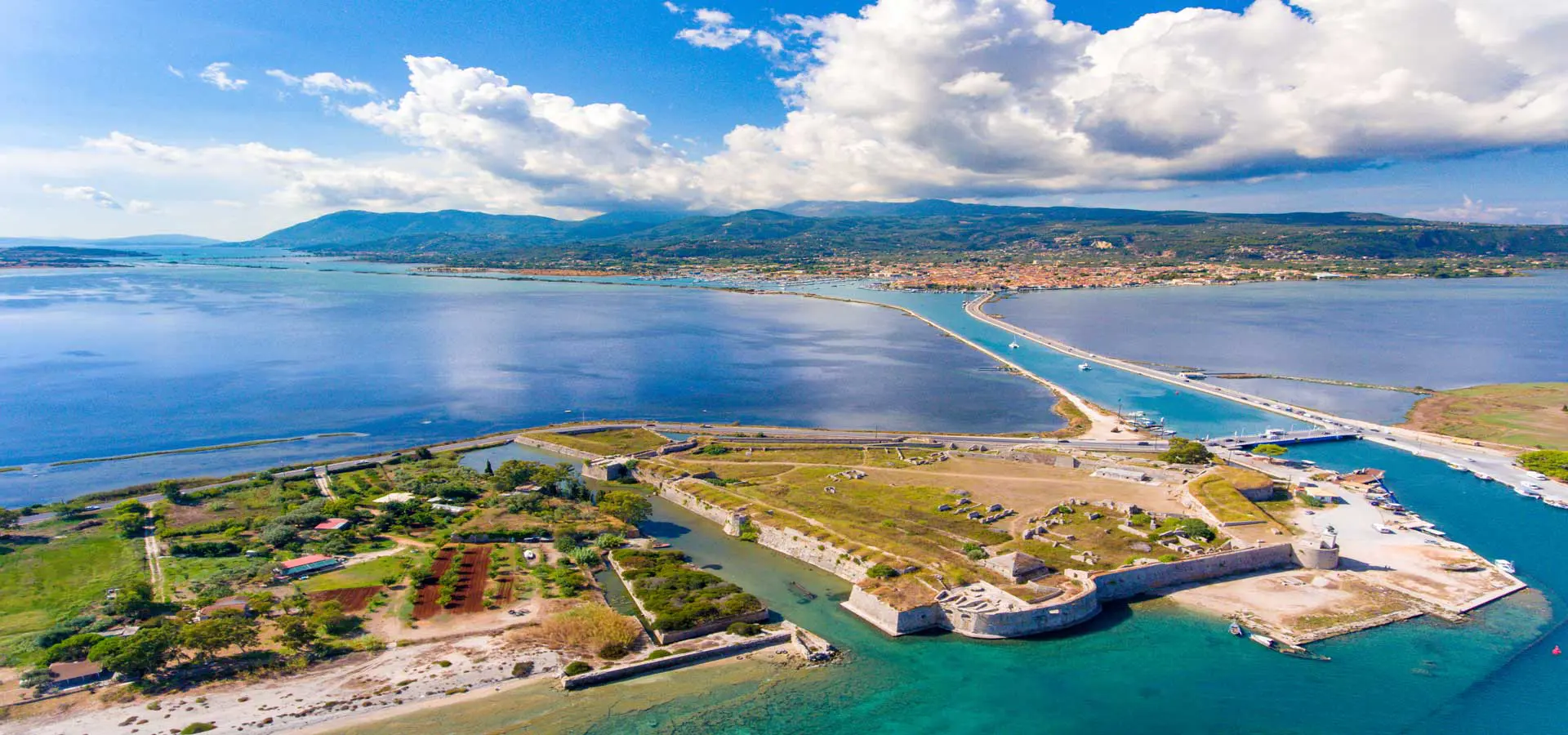
Lefkada. St. Maura castle. Copyright © Sisterscom.com / Shutterstock
A spectacular view is also offered by the Agia Mavra Castle (also known as Santa Maura) at the entrance of Lefkada town. A place not to be missed is the Venetian Olive Grove, a historic natural monument and the ideal place for walking and cycling, or going in search of the Chapel of Panagia Vlahernon, the Lady of Vlaherna, dating back to 1740.
The city also features poetic alleys and small squares with elaborate bell towers. One of the island’s attractions is its churches, which are mostly basilicas that were influenced, once again, by Venetian architecture, and which house icons and golden iconostasis.
Local dishes of Lefkada
It is also worthwhile stopping in one of the numerous taverns to try the local dishes, such as cuttlefish cooked in a sauce made from their black ink or local octopus with potatoes.
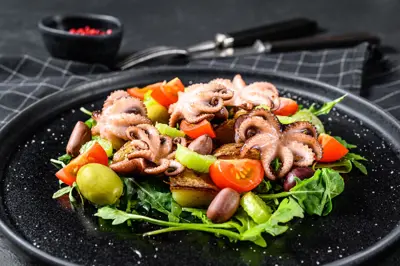
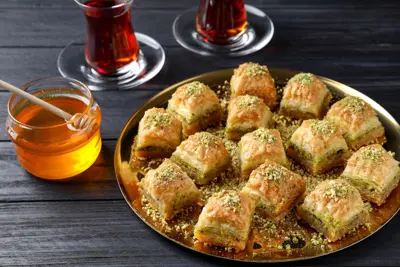
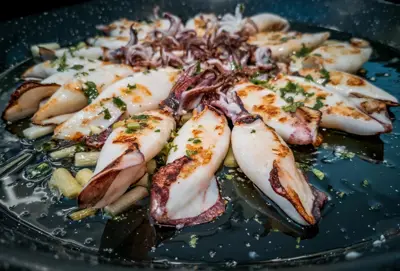
Finished with extraordinary sweets containing hazelnuts, sesame seeds and honey, and accompanied by Vertzami, a wine made locally on the island - even though it was originally a Venetian import - which is made from vines cultivated on hills at 200 to 500 metres altitude.
Text by Anna Glik
Updated by Alisè Vitri
Avion Tourism Magazine
Tourism Board
www.visitgreece.gr
www.lefkada.gr
Partnership with Booking.com
Where to sleep in Lefkada
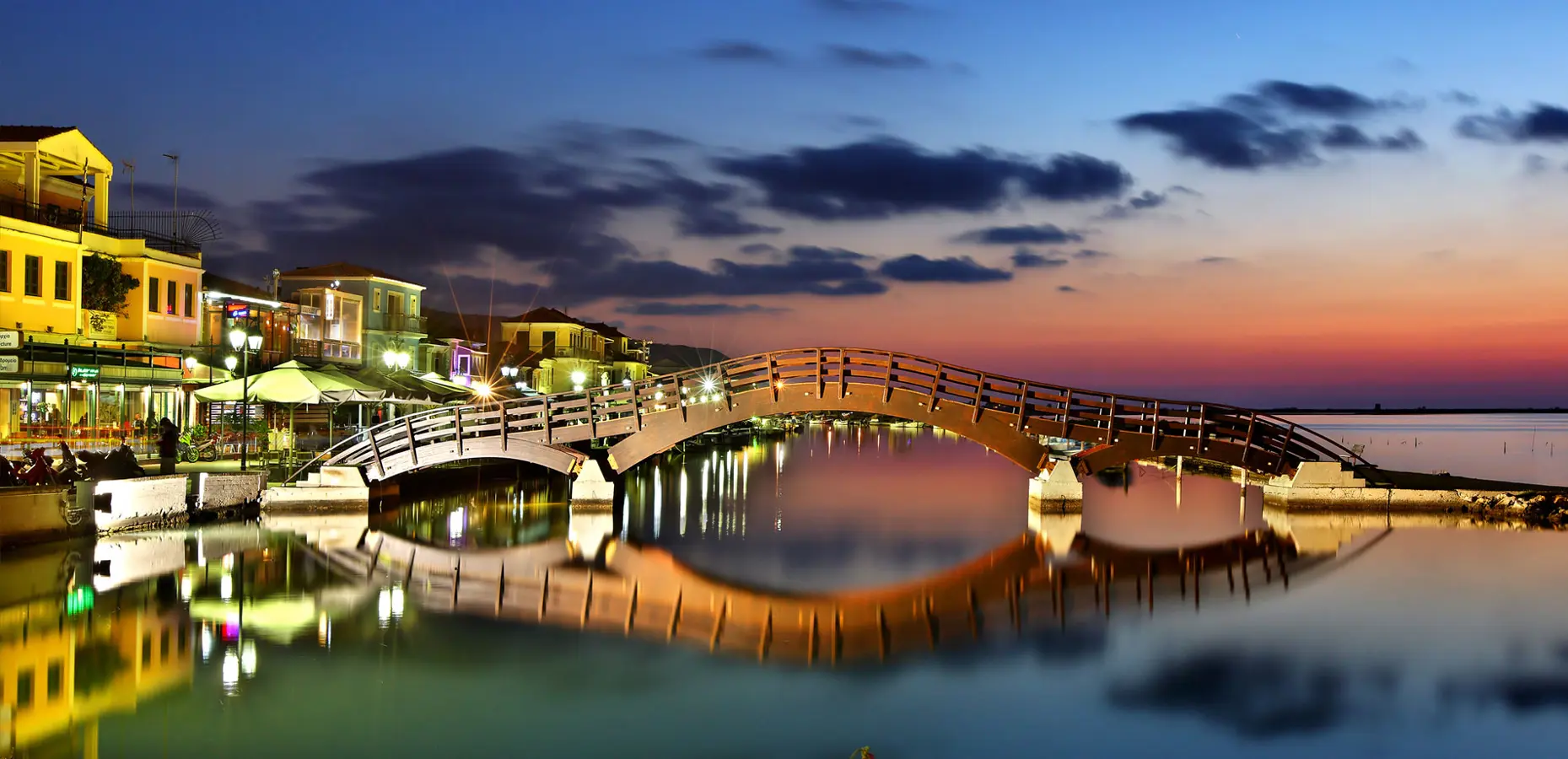
Lefkada. Copyright © Sisterscom.com / Shutterstock
Lefkada is a welcoming island and offers different possibilities for accommodation.
To find the ideal hotel and the best offers you can do a search for the stars but also for districts or landmarks.
DISTRICTS
Hotels in the districts
LANDMARKS
Hotels in tourist areas
LANDMARKS
Hotels in tourist areas
where to go in Lefkada
Monuments and Museums of Lefkada
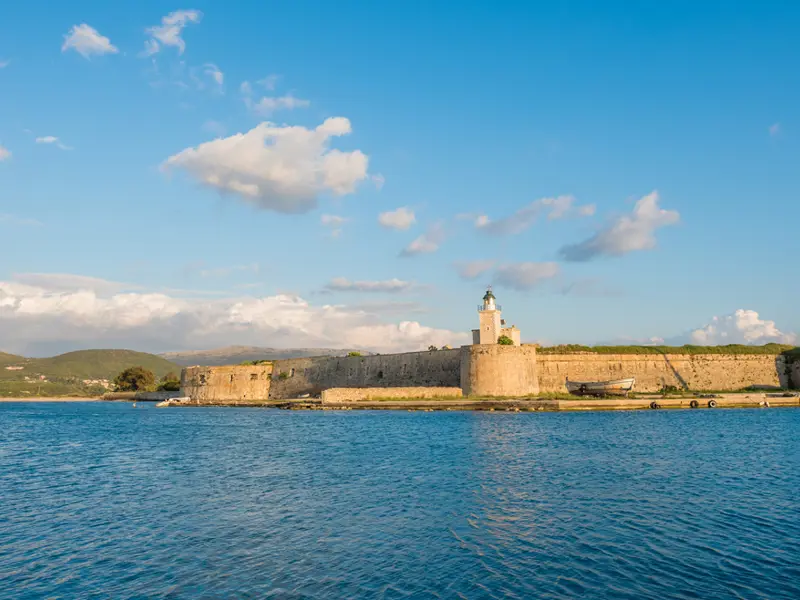
Copyright © Sisterscom.com / Shutterstock
CASTLE OF AGHIA MAVRA
This enormous castle, or rather its ruins, lies at the entrance to Lefkada and once surrounded the entire city, defending it against enemy attack. It is a medieval fortification shaped like an irregular heptagon, with 7 bastions at each corner. In summer traditional and modern concerts with well-known Greek singers are held within its walls. It is located on the site of a temple dedicated to the goddess Aphrodite and is an interesting archaeological site. It was built around 1300 by Giovanni (Ioannis) Orsini.
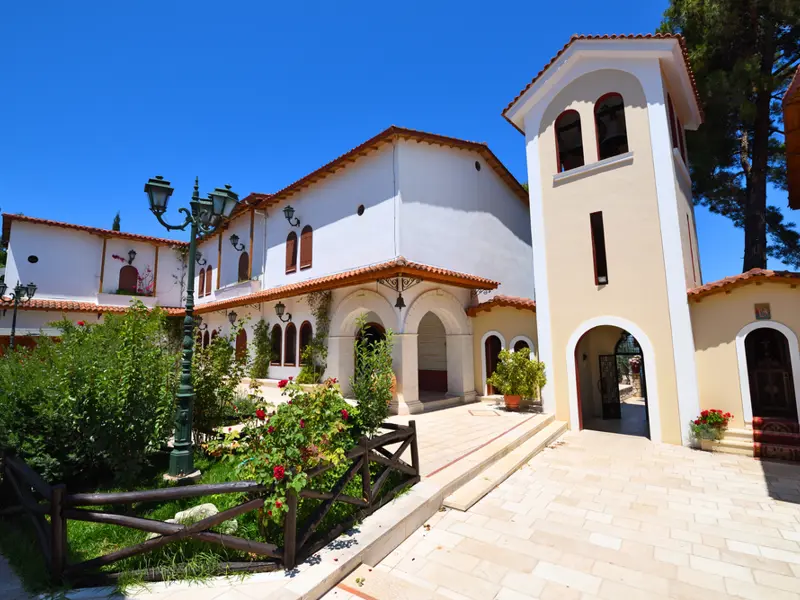
Copyright © Sisterscom.com / Shutterstock
MONASTERY OF PANAGHIA FANEROMENI
Just four kilometres from the city lies one of the most important religious buildings of the Island of Lefkada, where, it seems, followers of the apostle Paul preached the Gospel and were visited by the same apostle. It is a place of spirituality where on the day of the Holy Spirit a feast is held. A small zoo can be found in its garden which houses parrots, ostriches, squirrels and deer. The monastery displays icons, wooden altarpieces and valuable religious items. The monks’ chambers can also host pilgrims
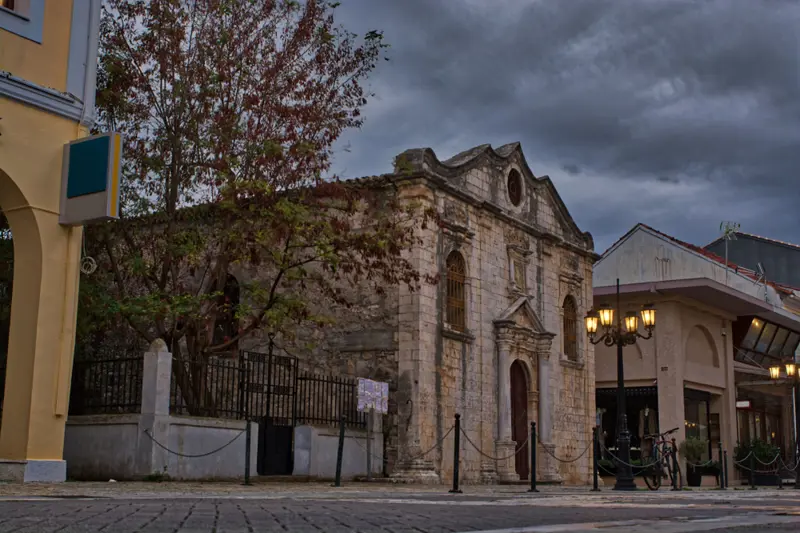
Copyright © Sisterscom.com / Shutterstock
CHURCH OF THE ALMIGHTY
A fine Baroque construction dating back to the beginning of the eighteenth century, which is located in the centre of the city’s market. Inside the Church of the Almighty features a sculpted wooden iconostasis and numerous icons created by the most important Greek iconographers. The tomb of the national poet, Aristotelis Valaoritis, lies behind the presbytery.
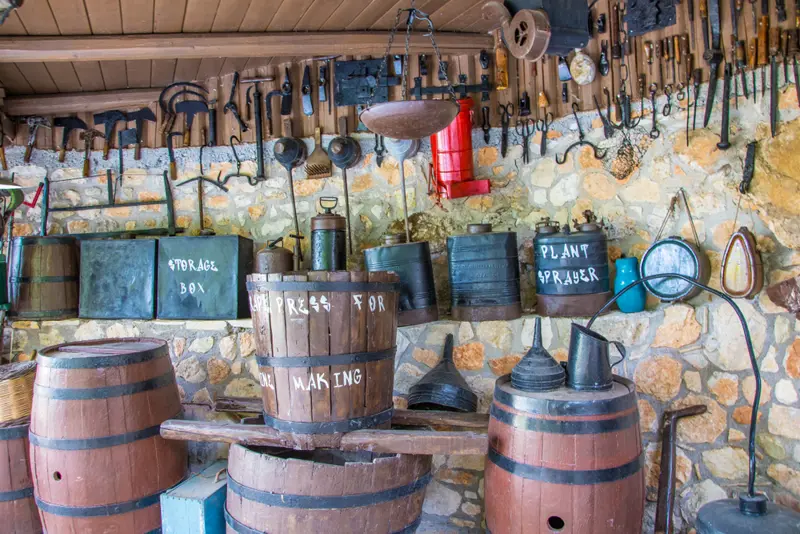
Copyright © Sisterscom.com / Andronos Haris / Shutterstock
ORPHEUS FOLKLORE MUSEUM
The Orpheus Folklore Museum houses over 1,000 functional items connected to farming on the Island of Lefkada, tools of old professions and trades, as well as traditional costumes and embroidery. The room of a traditional home has also been recreated for visitors to view.
CHURCH OF AGIOS MINAS
This Church of Agios Minas is found near the Church of the Almighty and is worth a visit due to its very rich wooden iconostasis and its valuable icons, works by illustrious iconographers of the Ionian island such as Kontarinis, Roussos, Doxaràs, Koutouzis and Ventouras.
ARCHAEOLOGICAL MUSEUM OF LEFKADA
The Archaeological Museum exhibits items that range from the Palaeolithic era to the late Roman period belonging to public and private life of the ancient inhabitants of Lefkada: funerary urns, statues of local divinities, and a room dedicated to the German archaeologist Wilhelm Dörpfeld, a pupil of Schliemann, who is buried here and who undertook many digs on the island, developing the theory that Lefkada was the ancient Ithaca described by Homer.
Excursions in Lefkada and surroundings
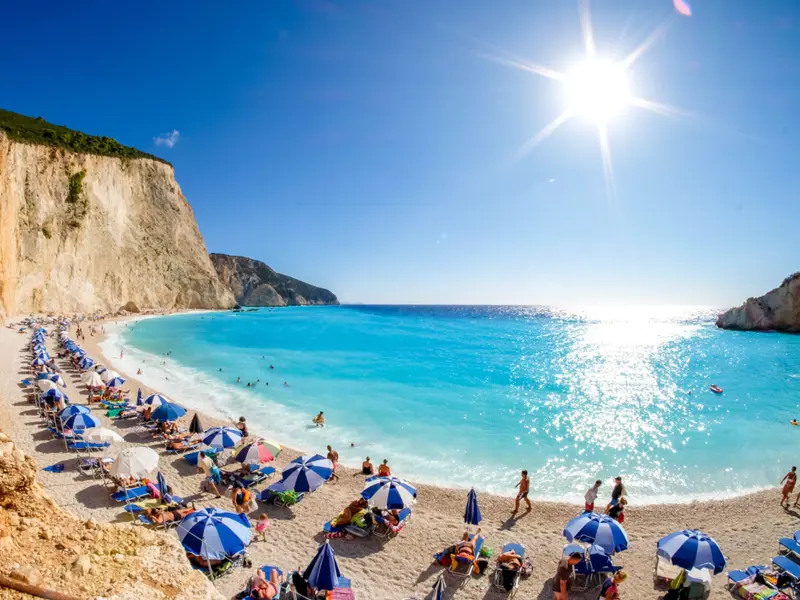
Copyright © Sisterscom.com / Shutterstock
BEACHES OF LEFKADA
Some of the most famous beaches of the Island of Lefkada include Kastro, Ghira, Pefkoulia, Agios Nikitas, Mylos, Kathisma, Kalamitsi, Egremni, Gialos Athaniou, Porto Katsiki and are all of incomparable beauty, with turquoise waters, pristine white sand and impressive cliffs.
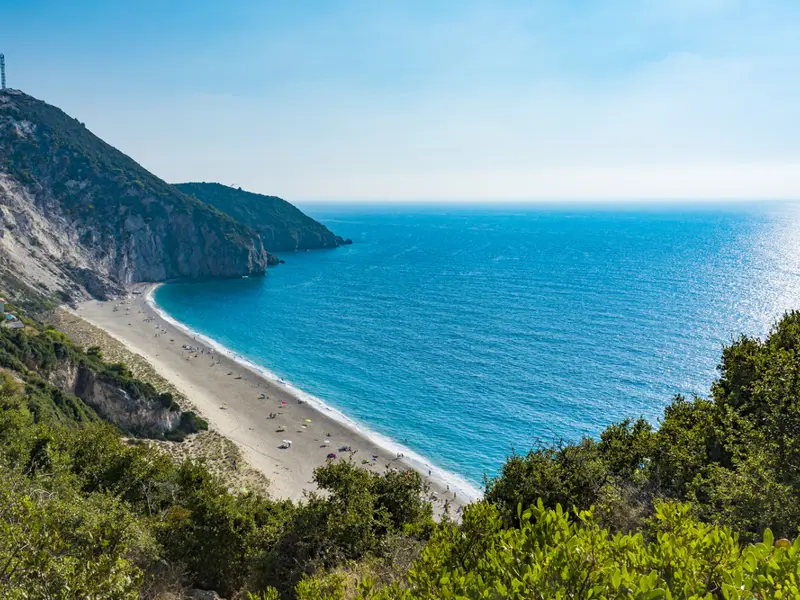
Copyright © Sisterscom.com / RODKARV / Shutterstock
AGIOS NIKITAS
Agios Nikitas is a picturesque village on the sea, set in an environment of natural beauty, just 12 km from the city. A beautiful view can be enjoyed from the beach of Agios Nikitas and the beaches next to Pefkoulia and Milos.
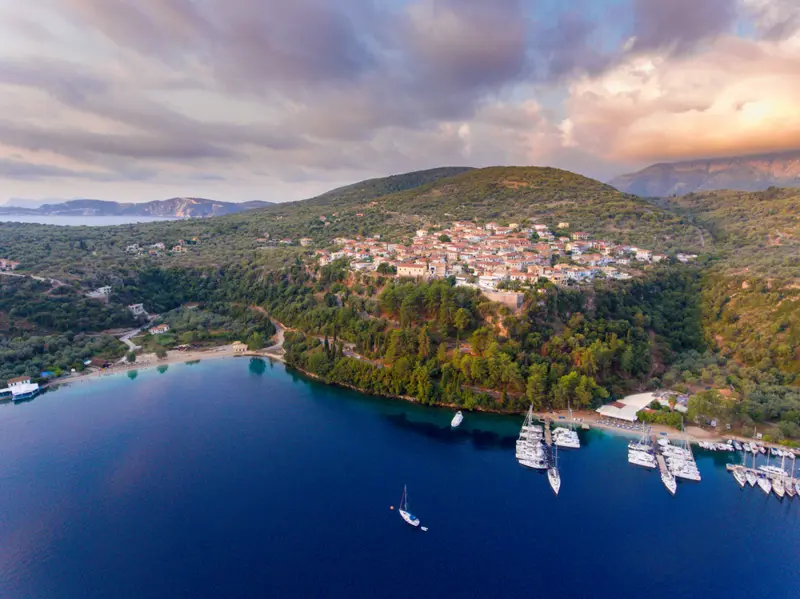
Copyright © Sisterscom.com / Shutterstock
MEGANISSI
Meganissi is a small island in the Ionian Sea, 4 nautical miles from the Island of Lefkada. It is the largest island in an archipelago that includes Skorpios, Skorpidi, Thilià, Kithròs and other small islets (such as Tafi), in the province of Meganissi. Here there are three characteristic villages Vathì, Katomeri and Spartochori. The most beautiful beaches of the Island of Meganissi are: Agios Ioannis, Spilia, Passoumaki, Ambelakia, Atherinos, Faros, Limonari, Elià, Loutrolimni. Don’t miss a visit to the caves of Papanikolì and Giovani, accessible only from the sea.
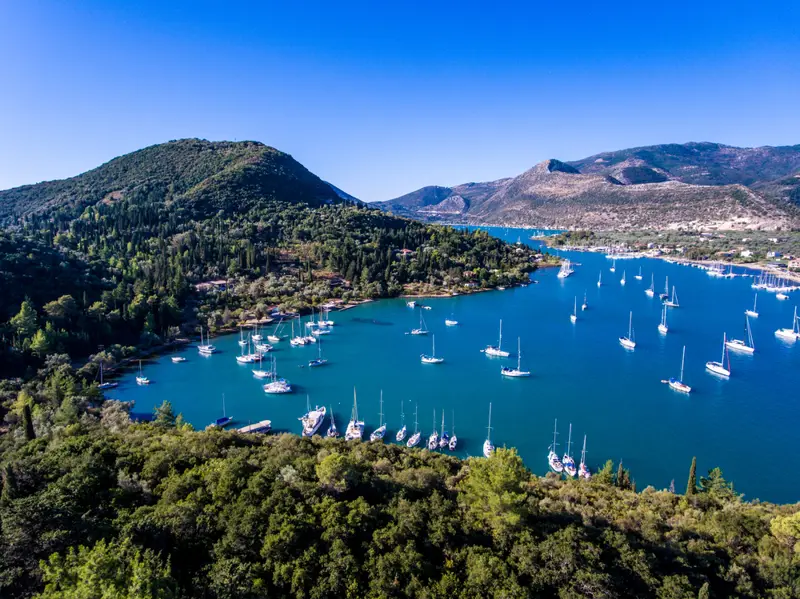
Copyright © Sisterscom.com / Shutterstock
NIDRÌ
Nidrì is found in the province of Ellomenos on the Island of Lefkada. It offers a splendid view of the Bay of Vlichò. Various small isletsof various sizes are found in front of the bay: Madourì, which belongs to the Valaoritis family, Skorpios and Sparti belonging to the Onassis family, Skorpidi, Meganissi, and the peninsula of Agia Kiriakì. Worthy of a visit is to the gorge of Dimossaris and its waterfalls, the red church of Platìstoma and the monastery dedicated to Asomatos Arcangel Michael. Nidrì is connected by ferry to Meganissi, Ithaca and Kefalonia.
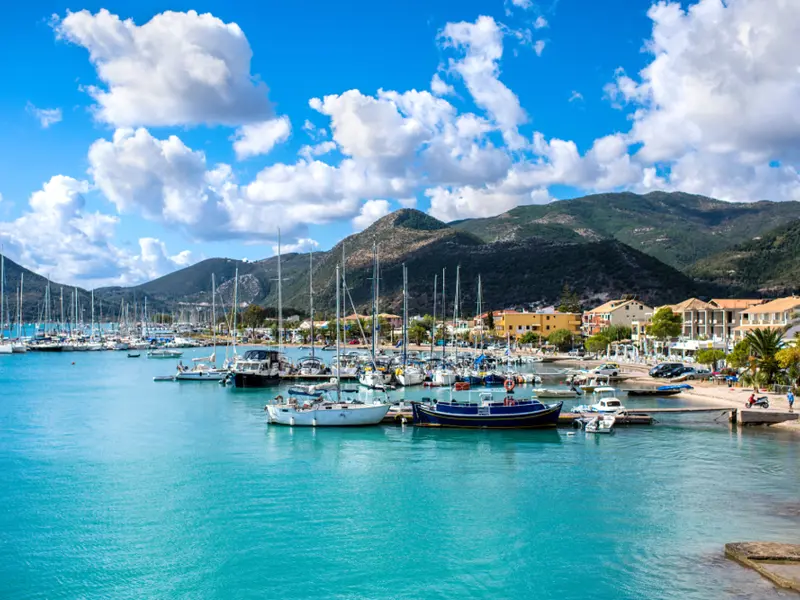
Copyright © Sisterscom.com / Shutterstock
BOAT TOURS IN LEFKADA
From the Island of Lefkada, boat trips are available or boats can be hired to visit the nearby islands of Skorpios, Madouri, Kefalonia orIthaca. A boat tour offers the opportunity to visit bays that are inaccessible from dry land including the Bay of Gheni and Bay of Dessimi, in front of Nidrì, but also Meganissi and the small islands of Kastòs, with the Fokotripa (Seal Hole), and Kàlamos.
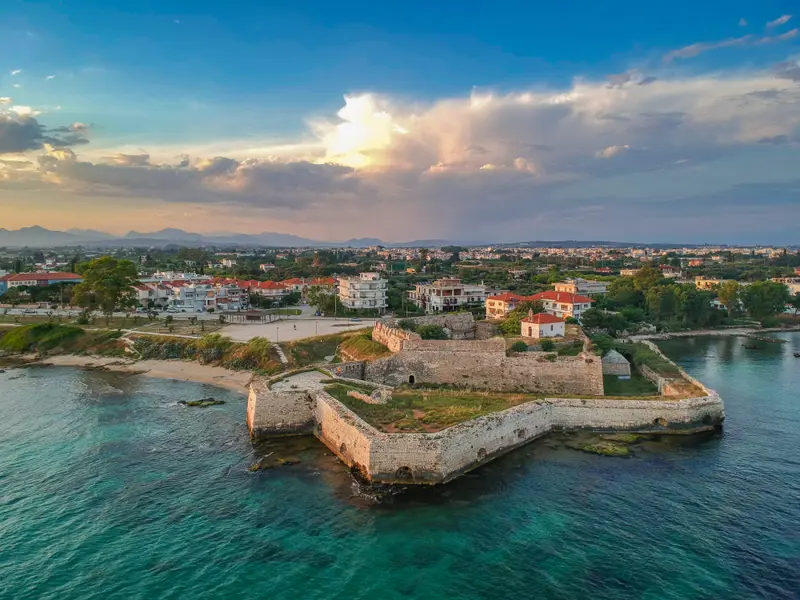
Copyright © Sisterscom.com / Shutterstock
PREVEZA
The town of Preveza, at the entrance of the Gulf of Amvrakikos, is worth a visit for its pink sand beaches that extend for over 60 kms and for its monuments and museums. These include the Museum of the Naval Battle of Actium, a historic battle fought at sea off Preveza in 31 BC between the Ptolemaic Empire led by Cleopatra and Octavian, Emperor of Rome, who was the victor and who in honour of this victory founded the city of Nicopolis (in Greek ‘city of victory’). Traditional buildings adorn the port and its old town, while the footpaths and cobbled alleyways are filled with taverns and coffee bars.
Partnership with GetYourGuide
Discover all Tours
Luxury
You might be interested in
Other destinations
Airports nearby Lefkada



